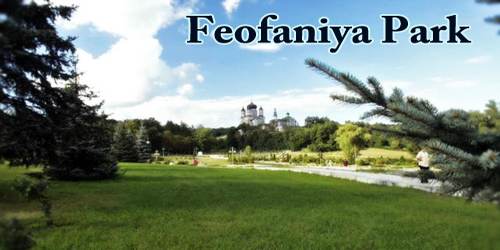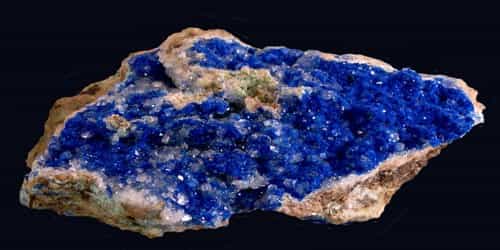Antwerp (/ˈæntwɜːrp/; Dutch: Antwerpen (ˈɑntʋɛrpə(n)); French: Anvers (ɑ̃vɛʁs)) is known for its huge port, which is important to worldwide trade, and for being the home of baroque painter Peter Paul Rubens. It is the second-largest city in Belgium and the capital of Antwerp province in the Flemish Region. With a population of 520,504, it is the most populous city proper in Belgium, and with a metropolitan population of around 1,200,000 people, it is the second-largest metropolitan region after Brussels.
Antwerp has long been a powerful magnet for everyone from fashion moguls and club queens to art lovers and diamond dealers. In the mid-16th century, it was one of Europe’s most important cities and home to baroque superstar painter Pieter Paul Rubens as many a museum will regularly remind us. Despite many historical travails thereafter, and severe WWII bombing, Antwerp retains an intriguing medieval heart with plenty of café-filled cobbled lanes, a riverside fortress, and a truly impressive cathedral. Today, however, Antwerp’s top draw-cards are its vibrant fashion and entertainment scene, along with its startling architectural and cultural contrasts.
Antwerp is on the River Scheldt, linked to the North Sea by the river’s Westerschelde estuary. It is about 40 kilometers (25 mi) north of Brussels, and about 15 kilometers (9 mi) south of the Dutch border. The Port of Antwerp is one of the biggest in the world, ranking second in Europe and within the top 20 globally. The city is also known for its diamond industry and trade.

Both economically and culturally, Antwerp is and has long been an important city in the Low Countries, especially before and during the Spanish Fury (1576) and throughout and after the subsequent Dutch Revolt. Antwerp was also the place of the world’s oldest stock exchange building, originally built in 1531 and re-built in 1872.
The inhabitants of Antwerp are nicknamed Sinjoren (Dutch pronunciation: sɪɲˈjoːrə(n)), after the Spanish honorific señor or French seigneur, “lord”, referring to the Spanish noblemen who ruled the city in the 17th century. The city hosted the 1920 Summer Olympics.
Because Antwerp lies in the Dutch (Flemish) speaking part of Belgium, the city plays the role of the unofficial capital of Flanders. Antwerpians generally take this role very seriously, conscious as they are of the great importance of their city in the past and present. The pride and competitive attitude thus exhibited by the residents have led to their being designated by the nickname Sinjoren (from the Spanish señores).
History –
The site of Antwerp was probably already inhabited, as excavations on the right bank of the Schelde have proved, in Gallo-Roman times, in the 2nd and 3rd centuries CE. After the great Eurasian migrations of the 4th and 5th centuries, the region was occupied and Germanized by Franks and possibly Frisians, who gave it its present name, from the Germanic prefix anda (“against”) and a noun derived from the verb werpen (“to throw”), indicating a structure possibly a predecessor of Antwerp’s 9th-century fortified castle, the Steen erected against something or someone.
The city first experienced an economic boom in the 12th century, when the rival port of Bruges started silting up. By the first half of the 14th century, Antwerp had become the most important trading and financial center in Western Europe, its reputation based largely on its seaport and wool market.
A more picturesque etymology for the name of the city involves the story of the evil giant Druon Antigonus, who severed the hands of the river’s boatmen when they refused to pay his exorbitant tolls. The Roman soldier Silvius Brabo challenged him to a fight, cut off one of his hands, and flung it into the river, not far from the site of the present Steen, thus putting an end to the giant’s extortion and giving the city its name: literally, “to throw a hand.” Antwerp’s coat of arms consists of a fortified castle with a hand on each side; and in the Great Market, in front of the 16th-century Town Hall, the Brabo Fountain (1887) depicts the legendary event.
In 1356, the city, which had been part of the Holy Roman Empire, was annexed to the County of Flanders and lost lots of its privileges, partly to Bruges’ advantage. Fifty years later, the political and economic tide turned again and as the Golden Age unfolded, Antwerp became a world-class metropolis, described as ‘the loveliest city in the world’.
By the second half of the 16th century, the city was the focus of politico-religious struggles between the Protestant North and Catholic South (Spain), which led to the River Scheldt being closed. From an economic point of view, this was a disaster. Yet the city continued to flourish culturally until the mid-seventeenth century thanks to painters like Rubens, Anthony Van Dyck, Jordaens and Teniers, printers such as Plantin and Moretus, and the famous Antwerp harpsichord builders.
But from 1650 till the 19th century, Antwerp went into serious decline, as the Scheldt remained closed and the city became little more than a provincial town. It was only after the fall of Napoleon at Waterloo (1815) that Antwerp entered a short period of prosperity, which ended with the Belgian Revolution (1830) and once again the closure of the Scheldt. The river was finally reopened for good in 1863, paving the way for Antwerp to return to its former glory.
Antwerp was the first city to host the World Gymnastics Championships, in 1903. During World War I, the city became the fallback point of the Belgian Army after the defeat at Liège. The Siege of Antwerp lasted for 11 days, but the city was taken after heavy fighting by the German Army, and the Belgians were forced to retreat westwards. Antwerp remained under German occupation until the Armistice. Antwerp hosted the 1920 Summer Olympics.
Since World War II Antwerp, its suburbs, and its seaport have grown apace, spurred by a commercial, industrial, and maritime boom. Port facilities, highways, and inland waterways have all been extended and improved. Some of this expansion, however, has created ecological problems, which have been investigated and addressed to some degree. Antwerp also has become the most important center of finance and other services in northern Belgium, although the closure of the Antwerp Stock Exchange in 1997 reflects the increasing concentration of financial activities in Brussels.

Climate and The city site –
Antwerp has an oceanic climate (Köppen: Cfb) similar to that of Southern England while being far enough inland to build up summer warmth above 23 °C (73 °F) average highs for both July and August. Winters are more dominated by the maritime currents instead, with temps being heavily moderated.
Antwerp’s site on the right bank of the generally south–north-flowing Schelde is a vast flat alluvial plain. Since 1923, however, the city’s territory also has included an area on the left bank of the river. The annexation of villages on the right bank north of Antwerp in 1929 and 1958 extended the city’s territory to the Dutch frontier, and further annexation in 1983 of municipalities surrounding the original city added considerably to Antwerp’s area and population. The total area of contemporary Antwerp measures 79 square miles (204.5 square km), compared with 7 square miles (18 square km) before the beginning of the annexations. Only a part of this territory is completely built up. The extension of the agglomeration is continuing; many outlying villages have already lost their agricultural character and have grown in population as a result of emigration from the city.
The municipality comprises the city of Antwerp proper and several towns. It is divided into nine entities (districts):
- Antwerp
- Berchem
- Berendrecht-Zandvliet-Lillo
- Borgerhout
- Deurne
- Ekeren
- Hoboken
- Merksem
- Wilrijk
In 1958, in preparation of the 10-year development plan for the Port of Antwerp, the municipalities of Berendrecht-Zandvliet-Lillo were integrated into the city territory and lost their administrative independence.
During the 1983 merger of municipalities, conducted by the Belgian government as administrative simplification, the municipalities of Berchem, Borgerhout, Deurne, Ekeren, Hoboken, Merksem and Wilrijk were merged into the city. At that time the city was also divided into the districts mentioned above. Simultaneously, districts received an appointed district council; later district councils became elected bodies.
The Economy and Culture –
Apart from interruptions during the two world wars, Antwerp has experienced steady economic growth since the start of the 20th century and is now home to the second-largest port in Europe, as well as the world hub for uncut diamonds.
In the 16th century, the city developed an important sugar-refining industry, in which partially worked sugarcane was brought in by ship, refined, and reexported. The first petroleum refineries were established during the 1920s and ’30s, and they were soon joined by automobile assembly plants. After World War II, the industry expanded at a rapid pace. Larger petroleum refineries, closely followed by petrochemical industries, were established, together with chemical plants in the 1960s, and the automotive industry was restructured on a larger scale. In the early 21st century, Antwerp remained one of the world’s most important petrochemical centers.
According to the American Association of Port Authorities, the port of Antwerp was the seventeenth-largest (by tonnage) port in the world in 2005 and second only to Rotterdam in Europe. It handled 235.2 million tons of cargo in 2018. Antwerp’s other great mainstay is the diamond trade that takes place largely within the diamond district. 85 percent of the world’s rough diamonds pass through the district annually, and in 2011 turnover in the industry was $56 billion. The city has four diamond bourses: the Diamond Club of Antwerp, the Beurs voor Diamanthandel, the Antwerpsche Diamantkring, and the Vrije Diamanthandel.
It is significant, in view of Antwerp’s long-standing involvement with learning and with the arts, that two of the most important figures of its cultural past are still present in the modern city through the preservation of their homes and workshops as museums: the 16th-century humanist printer Christophe Plantin (Plantin-Moretus Museum) and the 17th-century painter Peter Paul Rubens (Rubens House). Rubens’s works may be seen in the Royal Museum of Fine Arts, as well as in the Cathedral of Our Lady and many other Antwerp churches, such as the Church of St. James, where the painter is buried. Rubens united Italianate traits and an attachment to the Flemish artistic tradition to create a highly personal style. His students and coworkers included the three 17th-century Antwerpians Jacob Jordaens, Anthony Van Dyck, and Frans Snyders; their works also may be seen in the Royal Museum, which houses a vast collection from the 15th to the 20th century.
Informally, most Antverpians (in Dutch Antwerpenaren, people from Antwerp) speak Antverpian daily (in Dutch Antwerps), a dialect that Dutch-speakers know as distinctive from other Brabantic dialects for its characteristic pronunciation of vowels: an ‘aw’ sound approximately like that in ‘bore’ is used for one of its long ‘a’-sounds while other short ‘a’s are very sharp like the ‘a’ in ‘hat’. The Echt Antwaarps Teater (“Authentic Antverpian Theatre”) brings the dialect on stage.
A number of other museums are located in historical buildings such as the Steen, the medieval riverside castle that is home to the National Maritime Museum; the 16th-century Butchers’ Hall and Brewers’ Hall, both of which house historic arts and artifacts; and the Maagdenhuis (Flemish: “Maidens’ House”), a 16th-century charitable foundation for needy young women, where Renaissance art and furniture may be seen. Other small museums were established by 19th-century patrician families, such as the Mayer van den Bergh Museum, which contains sculpture, furniture, and paintings, notably Pieter Bruegel’s famous Dulle Griet (or Mad Meg). Museums for folklore and for ethnography are located not far from the Schelde. For modern art, there is the Museum of Contemporary Art, installed in a 1920s Art Deco grain silo in the old dock area of the port, which is close to the Provincial Museum of Photography, housed in a former warehouse built-in 1911. In the Middelheim Open-Air Museum of Sculpture, the permanent collection is displayed among the trees and lawns of a public park located south of the old city, and every other year a special exhibition feature works by young contemporary sculptors. Antwerp’s architecture ranges from Gothic to Postmodernism.
The city of Antwerp will co-host the 2020 World Choir Games together with the city of Ghent. Organized by the Interkultur Foundation, the World Choir Games is the biggest choral competition and festival in the world.
Information Sources:
















